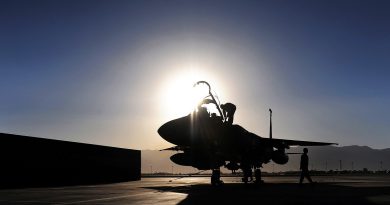UN peace envoy, Egypt working to restore calm along Gaza fence
Gaza (Reuters) – International mediators have stepped up efforts to prevent a new round of armed confrontation between Israel and the Islamist Hamas group, which runs Gaza, amid an escalation in violent protests along the border fence.
“The United Nations is talking to and working with all concerned to improve the lives of people in Gaza, particularly the most vulnerable,” U.N. Middle East peace envoy Tor Wennesland said on social media platform X on Wednesday, a day after he met Hamas officials in Gaza.
“The situation inside the Strip is dire and we must avoid another conflict that will have grave consequences for all. The people of Gaza have suffered enough and deserve more than a return to calm.”
A regional diplomat said Egypt, which brokered numerous truces between Israel and Gaza militants in the past, had also stepped up its efforts to prevent a slide into another war.
Palestinians in Gaza have held protests along the fence for nearly two weeks, breaking from a period of relative calm.
Gazans say they are protesting over issues including the treatment of Palestinian prisoners in Israeli jails and Jewish visits to the Al Aqsa mosque compound, a site holy to both Muslims and Jews, who know it as the Temple Mount.
Youths have thrown stones and improvised explosive devices at Israeli troops, who have responded with live fire, killing one Palestinian and wounding dozens of others.
Israeli military spokesperson Daniel Hagari told Israel’s Kan Radio the protests would fail to win concessions from Israel.
“The priority is to mount a strong defence and prevent the incidents going beyond the fence. Whoever turns the incident into one of terrorism – gets hit and is killed … They won’t get concessions through terrorism,” said Hagari.
Israel had shut crossings and stopped workers from coming into its territory since early last week. Israel said reopening “will be subject to ongoing evaluation on the evolving situation in the region”.
Economic Improvements
A Hamas spokesman had no immediate comment. The group has defended the demonstrations, saying they aimed to protest at Israel’s closure and “assaults” against Palestinians in the Israeli-occupied West Bank and East Jerusalem.
Several wars and a 16-year Israeli-led blockade, backed by Egypt, have devastated the economy of Gaza and sent the unemployment rate to around 46% percent, one of the highest in the world.
The regional diplomat, who spoke on condition of anonymity because he was not authorised to speak to the media, said mediators sought more Israeli economic improvements, further ease up on crossings it controlled with Gaza, and an increase in the number of work permits.
In return, he said, Hamas would curb protests and end the use of improvised bombs and incendiary balloons.
He said the protests were not isolated from a financial problem Hamas is facing, worsened by Qatar’s slashing of funds.
Qatar has cut a grant it used to offer to support the wages of 40,000 Hamas employees to $5 million from $7 million.
In August, employees received 55% of the wages, not the usual 60%. The group has not paid wages in full for many years.
“Hamas understands that it is not in the interest of anyone in Tel Aviv, Washington, or the region to have wars or engage in open battles with Gaza and therefore, it began to activate tough tools and demonstrations along the border east of Gaza as tools of field pressure on the politicians in Tel Aviv and Washington,” said Gaza economist, Mohammad Abu Jayyab.


